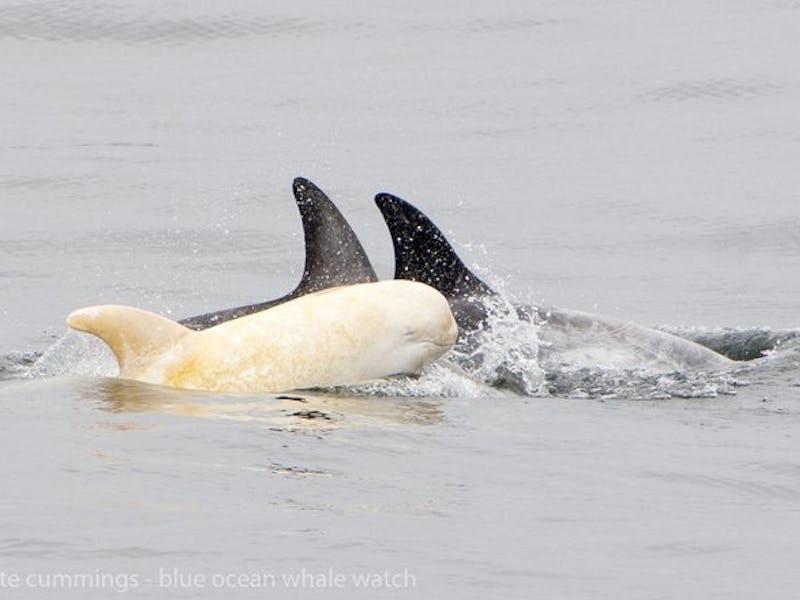Biology Predicts Life Will Suck for Rare Albino Dolphin
It's adorable, but its condition brings health risks.

Call her Kate.
Sailing aboard the Blue Ocean Whale Watch boat in California’s Monterey Bay, Kate Cummings noticed the rare sighting of an eerily ivory dolphin last week. The 3-year-old albino Risso’s dolphin — formally referred to as Grampus griseus — was spotted swimming with its mother and, according to scientists, appears to be healthy. Previously, the whale-watching tour had spotted the albino animal in the same area in 2014, when it was still a calf.
Kate’s not the first albino ocean mammal. Herman Melville made a certain killer albino famous in his eponymous tome Moby-Dick, where an intrepid whaling captain hunts the animal over the course of numerous travails. Moby-Dick was partly based on the notorious man-eating Mocha Dick — supposedly an albino sperm whale.
Sightings of albino animals in the wild are few and far between. Rissos number between 13,000 and 16,000, swimming along America’s Pacific coast, Cummings told Gizmodo. Yet, Kate is believed to be the only known albino of the species in the area. In this case, the crew of the Blue Ocean Whale Watch was able to surmise that this was the same albino dolphin from three years ago by using photographs to identify blemishes and features on its mother, whom it was swimming alongside both times.
While this yet-to-be-named dolphin and its mereswine cousin, Pinky, are pretty dang adorable, albinism typically comes with a slew of health risks, particularly for animals.
Albinism is a rare genetic trait in animals, requiring both parents to carry the recessive gene to be passed down to offspring. As a condition, albinism is a lack of melanin production. The absence of which leaves the skin, hair, and eyes of the animal colorless or — in most cases — white with pink eyes. The pink color results from light reflecting off the red blood cells in the animal’s retinas. Melanin pigmentation absorbs incoming light in non-albino animals.
Without melanin, albino animals are more vulnerable to UV radiation, and are prone to suffer from poor eyesight and hearing. There’s also the obvious: Kate and other albinos don’t have the advantage of camouflage in the wild, leaving them noticeably vivid.
“As far as we can tell, this juvenile appears healthy,” Cummings told Live Science, which first reported the rare dolphin sighting.